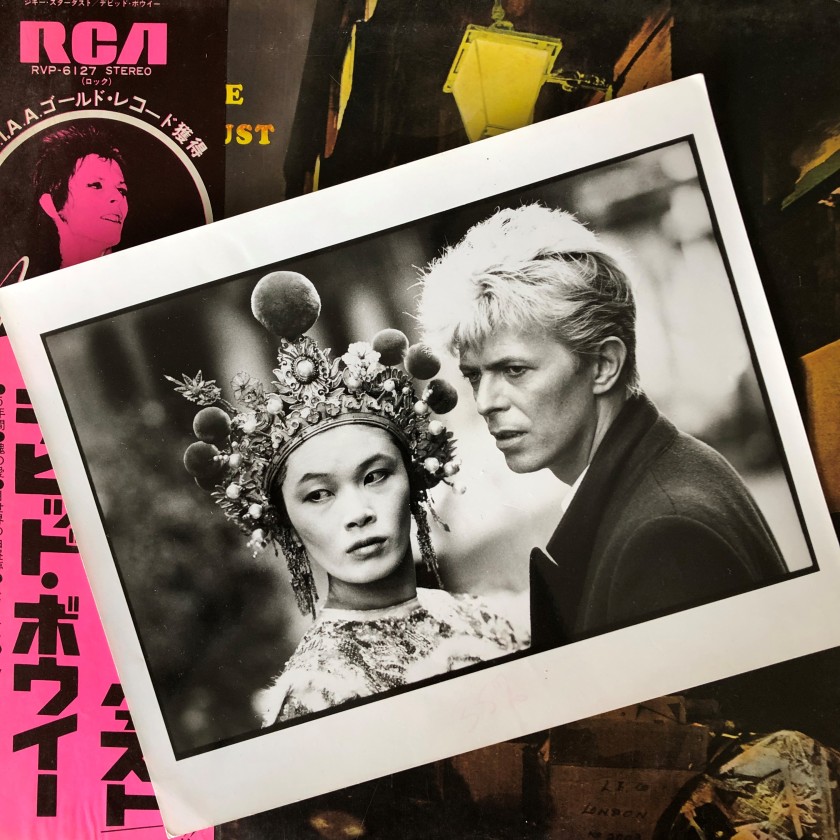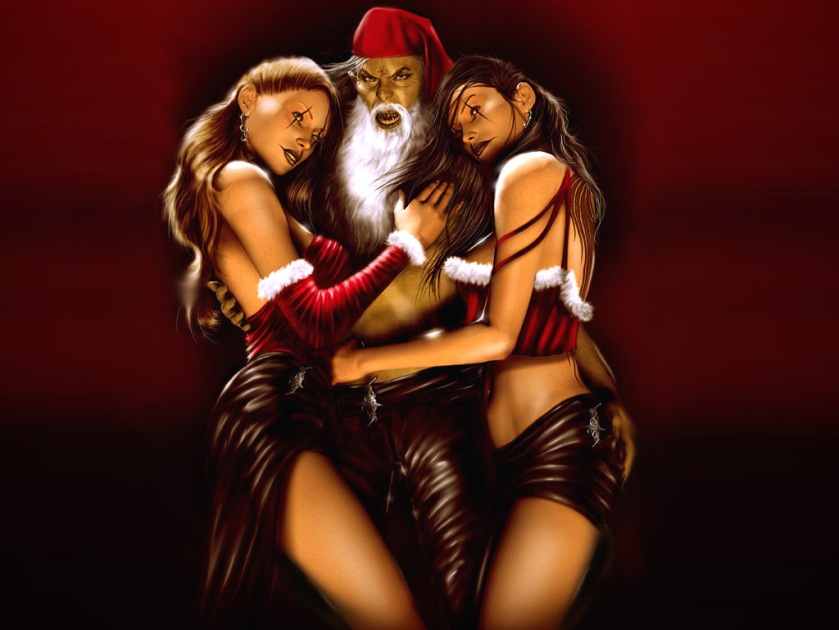
Amongst my many interests, I’m a collector of what I’ve come to call weird Christmas music. Each December, I put together a CD compilation for my friends of the treasures I’ve found, the strangest of the strange plus some favourites that the season wouldn’t quite be the same without. I started in 2002 and I still keep coming across notable tracks although I have to dredge through a lot of crap to uncover the truly sparkling gems.
Back in 2004, the Sydney Morning Herald ran my article about weird Christmas music. It was cut quite dramatically and PC’ed. Here is the full version, edited and updated. Enjoy.
Santa’s Dirty Secret: The Strange Tale of Weird Xmas Music
It’s fair to say that there’s never been much for Australians in Christmas music. Most of us wouldn’t know what a chestnut looked like, let alone seen one roasting on an open fire. And when was the last time we went dashing through the snow in a one-horse open sleigh?
Which is why our rebel hearts cry out for a suitable soundtrack for the times. Christmas music that tells it like it is. More National Lampoon Christmas Vacation than It’s A Wonderful Life. There’s ain’t no angels at Christmas, George Bailey, and if you jump off that bridge, there’ll be no second helpings of pudding, either.
Flip through the racks of Christmas CDs, or endure shopping centre musak and it’s all Michael Bolton, Mariah Carey and Kenny G. Yet there’s a whole nether world of Christmas music out there, charting a darker place, sardonic and questioning, playful yet with the traitorous kiss of a razor blade. A true post-9/11 take on the world and the way we look at it.
Ditch Sarah Brightman and Barbara Streisand and listen instead to Tom Waits, Spinal Tap, AC/DC, George Jones and Tammy Wynette, Booker T and The MGs, Spike Jones and His City Slickers, Otis Redding, Bob Dylan, Tiny Tim, The Partridge Family and The Ronettes. There’s something for everybody. Biting satire and loving homage. Jazz, swing, country, R&B, punk, comedy, novelty, pop and blues. There’s gay Christmas songs, Jewish Christmas songs (OK, Hannukah, then) even songs for people who really want this Christmas to be their last.
Uncovering a great weird Christmas song is like finding a redback nestling in Nanna’s fruit cake. It’s truly the gift that keeps on giving.
When Tommy Dorsey recorded “Santa Claus Is Coming To Town” in 1934, the snowy sluice-gates of popular, commercially-driven Xmas music opened wide. In 1947 the Singing Cowboy and star of radio and silver screen, Gene Autry, wrote “Here Comes Santa Claus”, inspired by the annual Hollywood Christmas Parade. It was a hit but not as big as the one he had just two years later.
“Rudolph The Red Nosed Reindeer” has been spinning around record players so long he’s generally assumed to be a traditional member of the North Pole community. Yet Rudolph was invented by a Chicago copywriter, Robert May, for the Montgomery Ward chain of department stores.
It started as a Christmas story given out to the store’s customers in 1939 until May’s brother-in-law, songwriter Johnny Marks (who would later pen “Rockin’ Around the Christmas Tree”, an enormous hit for Brenda Lee, and “A Holly Jolly Christmas”), immortalised the rosy appendage in song.
Gene Autry’s 1949 version sold 2.5 million copies before the year was out and total sales now hover around the 30 million-mark.
In 1948, Spike Jones and His City Slickers weighed in with “All I Want For Christmas Is My Two Front Teeth”. Jones’ trademark was to cleverly deconstruct the wildly popular Big Band craze, hacking away its sophisticated allure and subverting it with complete chaos. There weren’t many sound effects, including gunshots and blood-curdling screams, that couldn’t be incorporated into a Spike Jones song. Think the Goons crossed with the Texas Chainsaw Massacre meet Glenn Miller.
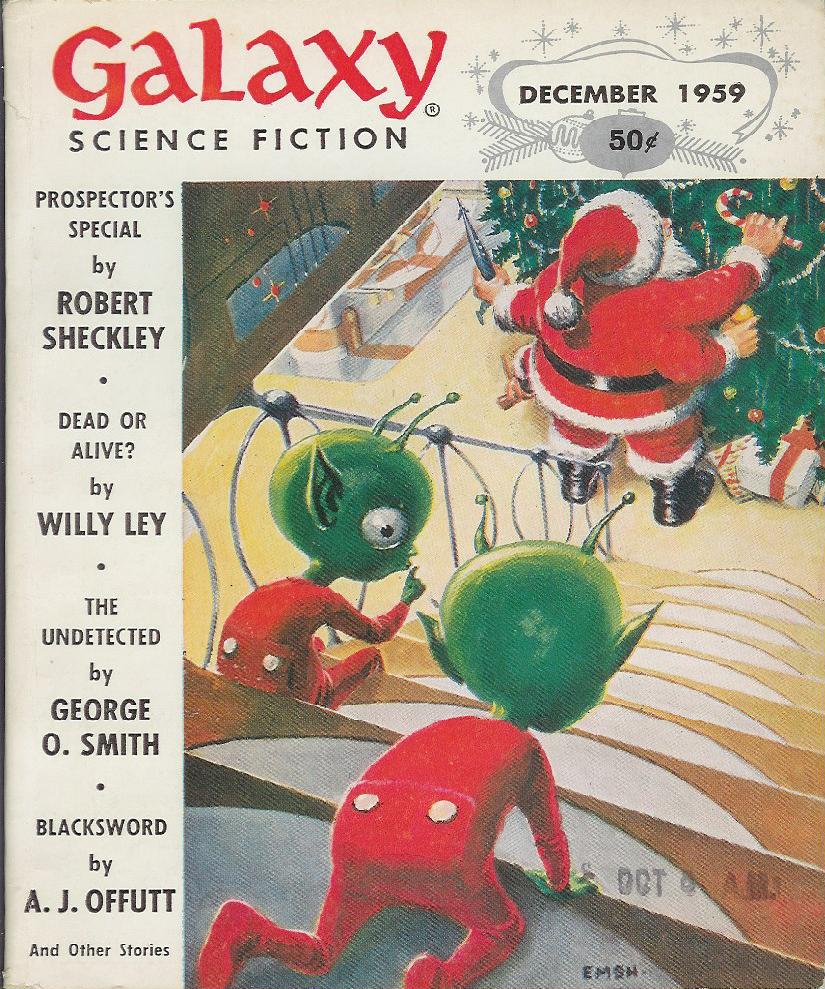
By the 1940s, the greatest of all Christmas songs (and even weird Christmas music fans will admit to it) was well and truly established. In May 1942, cardiganed crooner Bing Crosby recorded a number of new songs written by Irving Berlin for the movie Holiday Inn. One of these was “White Christmas”. It became an instant classic. So much so, that the record’s original master was worn out by 1947 and had to be re-recorded. It is this, the second version, that people know today.
The curious Xmas completist should check out the two-CD Bing Crosby: The Voice of Christmas – The Complete Decca Christmas Songbook (MCA 1998), which has four versions of “White Christmas” – the 1942 “A” take discarded due to a slight fluff Crosby made near the end of the recording, the released second 1942 “B” take, the 1947 re-recording, and a 1954 version with Peggy Lee and Danny Kaye.
Bing Crosby, strange as it may seem, is the patron saint of weird Christmas music. This has as much to do with “White Christmas” as it does with his duet on “Little Drummer Boy” with David Bowie in 1977. So if “White Christmas” in all its schmaltzy glory is hip, what’s the cut-off point?
A sense of fun is the deciding factor. And irony. It’s safe to assume that Dean Martin is cool but Neil Diamond is not. Dean’s irony may be martini-enhanced but it’s fair to say that Neil Diamond considers irony to be something that happens to his satin shirts. The Carpenters and Nat King Cole, although skating dangerously close to an ice-thin saccharine crust, are nonetheless cool and thus reside on that outer edge of the weird music spectrum.
It’s when Christmas music enters the Twilight Zone that things really get interesting. It becomes the perfect antidote for those who consider Christmas music to be aural wallpaper, agreeable background static to the frantic Yuletide season.
Many of the best are novelty songs such as the 1953 hit for 10-year-old Gayla Peevey, “I Want A Hippopotamus For Christmas”. A child star in her native Oklahoma City, Peevey’s song inadvertently became a case of life imitating art. After blitzing the nation, a publicity coup saw Peevey presented with her very own baby hippopotamus, which she promptly donated to the Oklahoma City Zoo. Named Matilda, the mammoth mammal led her own famed existence until 1998 when she was due to be transferred to Disney World in Florida. In a sad twist to the Xmas tale, the Matilda died en route.
By the 1950s, Christmas turntables were swinging with such classics as Eartha Kitt’s “Santa Baby”, Bobby Helms’ “Jingle Bell Rock”, and “Rockin’ Around The Christmas Tree” from pint-sized package Brenda Lee.
Over the years, there’s been some great novelty Christmas songs. Comedian Martin Mull lent the Big Red Guy some street cred with “Santafly”, a take on 70s blaxploitation movies, while Weird Al Yankovich tells what happens when the pressure gets too much in “The Night Santa Went Crazy”.
In 1999, The Little Stinkers, fronted by seven-year-old Mary Beltrami, fanned the winds of Xmas with “I Farted On Santa’s Lap”. Fashion tips also get a look-in with Canadian satirist Nancy White telling us “It’s So Chic To Be Pregnant At Christmas”.
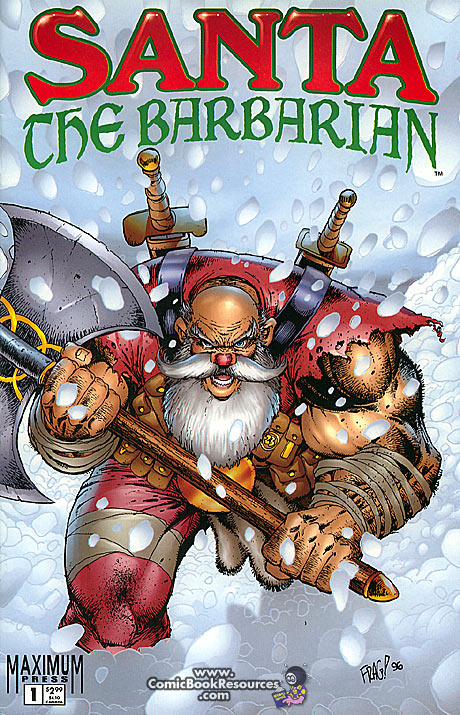
The king of novelty Christmas songs must be Bob Rivers, a Seattle radio DJ with a series of parody CDs. In deconstructing popular songs, he comes up with such Pythoneseque tracks as “Chipmunks Roasting On An Open Fire”, “Wreck The Malls”, “I Came Upon A Roadkill Deer”, and “It’s The Most Fattening Time Of The Year”. Rivers also contributed a parody AC/DC Christmas song, “Hell’s Bells”.
But who needs a parody when you have the real thing? AC/DC released their own, “Mistress For Christmas”, in 1990. The roll call of rock’s tinsel-tonsiled hard men include The Damned, The Ramones (with the festive “Merry Christmas – I Don’t Want To Fight”), Blink 182, the Mighty Mighty Bosstones, Slade, and even Spinal Tap. Most are individual tracks available only on compilations although an exception is the entertaining A Twisted Christmas from heavy metal cross-dressers, Twisted Sister.
Lou Reed’s “Xmas In February” gets a mention not only for almost being a Christmas song but as one of the very few that deal with Vietnam (along with Johnny & Jon’s 1966 curiosity “Christmas In Viet Nam”, and “There Won’t Be Any Snow (Christmas In The Jungle)” by Derrick Roberts).
Tom Waits’ “Christmas Card From A Hooker In Minneapolis” is a Xmas song in title only but is worthy of inclusion nonetheless. Waits, however, waited for a truly Gothic moment to enter the Xmas annuls with the darkly roiling, thumping excesses of “Christmas Sucks”.
And for those who think “‘Twas The Night Before Christmas” can’t be weird, try Henry Rollins and his muscular steamroller of a version.
Television shows and celebrities are well represented with Xmas selections from The Waltons, Ren & Stimpy, South Park, Jerry Springer and a truly great album from The Partridge Family.
Mae West’s Mae in December (1980) is so obscure it appears in very few of the film star’s discographies but it’s a great album with such choice cuts as “Put The Loot In The Boot, Santa”.
Another swag of weird but worthy Christmas outings include “Homo Christmas” by 1990s gay San Francisco punk band, Pansy Division, drag queen RuPaul’s Ho Ho Ho album and Merry MeX-Mas from El Vez, the renowned Mexican Elvis Presley impersonator.
Tiny Tim’s Christmas Album, an important inclusion in any collection, was recorded in Sydney in 1993 under the guidance of Martin Sharp. Australian band Girl Monster (fronted by Campbelltown-born and now US-based alt country songstress, Anne McCue) recorded “Dead By Christmas”, one of the very few seasonal songs that stress the ultimate in self-determination.
Dread Zeppelin, a reggae band fronted by a 130-kilogram Elvis impersonator and best known for its individualistic interpretation of Led Zeppelin songs, released The First No-Elvis in 1994.
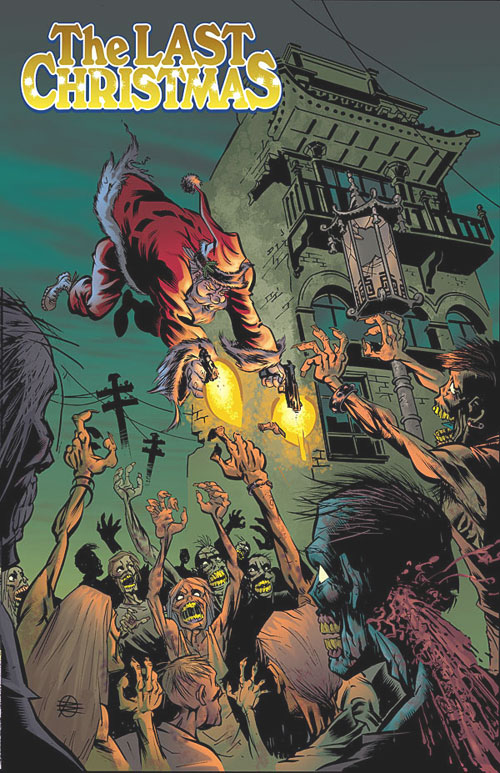
Big-band, swing and lounge music provide some brassy Xmas distractions with special mention going to the Brian Setzer Orchestra, Big Bad Voodoo Daddy, Royal Crown Revue, 60s space-age bachelor pad purveyor Esquivel, and Canadian crooner Jaymz Bee & The Royal Jelly Orchestra.
There’s so much great R&B and soul that it’s almost impossible to catalogue. My faves include the evocatively-titled “Back Door Santa” from Clarence Carter, and The Harmony Grits, comprising members of the original Drifters, who in 1959 recorded a bouncy interpretation of “Santa Claus Is Coming To Town”. And 14-year-old Frankie Lymon, reaching way beyond the top shelf where the presents are hidden for the high notes on “It’s Christmas Time Again”, which dates from around 1957.
The grand-daddy of all R&B festivities is Christmas Gift For You From Phil Spector (1963) with The Ronettes, The Crystals, and Darlene Love battling to be heard above Spector’s trademark Wall of Sound. The album has been reissued so many times and in so many forms, it’s one of the easiest to find (the 1988 CD release inexplicably includes a couple of turgid Elvis Presley tracks).
The Big Red Guy’s transportation dilemmas was an underlying theme of many country songs including Alan Jackson’s duet with Alvin and The Chipmunks on “Santa’s Gonna Come In A Pickup Truck”, The Tractors’ “Santa Claus Is Comin’ (In A Boogie Woogie Choo Choo Train)”, Toby Keith’s “Hot Rod Sleigh” and Buck Owens’ “Santa’s Gonna Come In A Stagecoach”. Joe Diffie, however, preferred a country-fried reinvention of another legend with “Leroy, The Redneck Reindeer”.
The Twilight Zone Award for weird Xmas music goes to songwriter Red Sovine. His 1978 mistletoe missive, “Faith In Santa”, otherwise known as “Billy’s Christmas Wish”, tells of a street Santa who meets a sad and sickly little boy with a story that distends even country music’s already flexible definition of tragedy. Just as listeners think the song can’t get any more heart-rending, the final twist is beyond description and extremely creepy. Keep the Kleenex handy and a bucket even closer.
Like much of the Xmas season, disappointments abound. Frankie Valli and the Four Seasons’ Christmas album from 1962 has only two cuts that even come close to the group’s successful formula of soaring falsettos high enough to make dogs’ ears bleed. The Three Stooges recorded a number of seasonal songs very late in their careers and it tells, the boys sounding so tired they seem to nap between choruses
Albums by Fats Domino, Liberace, Elvis Presley, The Monkees, Cyndi Lauper, Melanie, and Jackie Wilson sadly gather in the why-bother category. More often than not, Christmas albums by some of the 60s biggest rhythm and blues acts, including Smokey Robinson & The Miracles, fall into this trap and the label most guilty of such infringements is Motown, whose releases are generally so earnestly devout, so busy over-stuffing the Christ into Christmas they bleed the joy from joyous. One happy exception is The Jackson 5 Christmas Album from 1970, an infectiously boppy celebration of the season.
My own Christmas wish? Certainly not a new release from the Jingle Cats, whose 1994 album Here Comes Santa Claws was enough to threaten goodwill to all our four-legged friends. No, each year I beg Santa for a Leonard Cohen Christmas album.
Like so many people on Christmas morning, I know I’ll end up disappointed. But conjure the possibilities, if you will. Pass the razor, please. I’ll have an egg nog and a hot bath.
Words © David Latta



